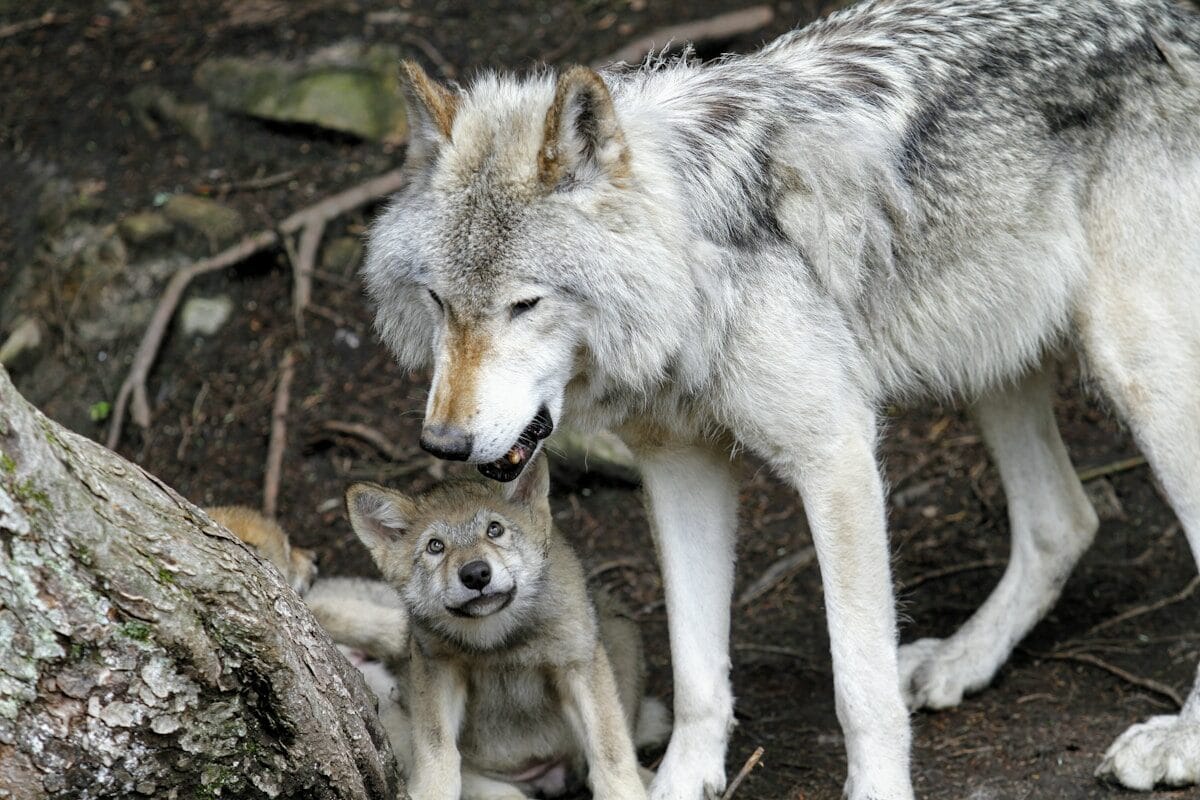Step- Parenting Lessons: Saving Endangered Wolf Pups Born in New York & Adopted into Wild Dens in New Mexico
Cross-fostering brings hope for endangered Mexican gray wolves as conservationists blend science, collaboration and nature to restore wild populations

The battle to save one of North America’s most endangered mammals is gaining ground through an unlikely alliance between captive-bred wolf pups and wild adoptive parents. Mexican gray wolves, reduced to just seven individuals in the 1970s, now number 286 in the wild thanks partly to a conservation technique that relies on nature’s most powerful instinct – the willingness of mothers to care for young that aren’t their own.
From Seven Survivors to Hundreds
The Mexican gray wolf’s story represents one of conservation’s most dramatic recoveries. By the mid-1980s, hunting, trapping and poisoning had completely wiped out these wolves from their natural habitat across the southwestern United States and Mexico. The species only survived because seven individuals were captured between 1977 and 1980 in Mexico and brought into captivity.
Today’s wild population has grown for nine consecutive years, reaching 286 wolves distributed across New Mexico and Arizona. This growth represents the longest continuous streak since recovery efforts began in 1998, when 11 captive-reared wolves were first released into the wild.
The Power of Cross-Fostering
Central to this recovery is a technique called cross-fostering, where captive-born pups just days old are placed into wild dens with adoptive mothers. The process capitalises on wolves’ natural instinct to accept and nurture additional pups as their own – regardless of their genetic origins.
On 5 May 2025, two Mexican gray wolf pups named Brutus and Gaan became the latest additions to this programme. Born at the Wolf Conservation Center in New York to parents Trumpet and Lighthawk, the siblings joined wild families in New Mexico through the coordinated efforts of multiple conservation organisations.
‘We’re honoured to be a part of this important mission,’ stated Rebecca Bose, curator at the Wolf Conservation Center. ‘The collaboration among all who had a hand in delivering Brutus and Gaan to their wild families is a true testament to the dedication of everyone involved, and a testament to the family-oriented nature of wolves.’
This success mirrors broader patterns in wildlife conservation programmes where breeding initiatives help preserve endangered species for future generations.
Genetic Lifeline
The urgency behind these fostering efforts becomes clear when examining the species’ genetic bottleneck. All current Mexican gray wolves descend from those original seven survivors, creating dangerous levels of inbreeding. Cross-fostering introduces genetic material from captive populations back into wild bloodlines, helping combat this crisis.
Since 2016, 126 captive-born pups have been placed into wild dens through this programme. However, survival rates remain challenging – less than 16% of fostered wolves survive to breeding age and produce offspring of their own.
Beyond Numbers: Real Impact
Despite low success rates, the programme has achieved meaningful victories. The US Fish and Wildlife Service documented that fostered wolves have successfully dispersed, formed pairs and established new packs – proving the technique can work when conditions align.
For parent wolf Trumpet, whose pups Brutus and Gaan recently joined wild families, this represents her 14th contribution to the programme. Over the years, she has fostered 14 pups to wild dens, making her a vital genetic contributor to recovery efforts.
‘Fostering a wolf pup born in captivity into a wild den is a vital part of our efforts to increase the number of wolves in the wild,’ explained Leila Wetmore, CEO of the Wolf Conservation Center. ‘This process requires precise coordination among many dedicated stakeholders and carries both significant challenges and impact.’
The maternal bonds that make this programme possible reflect the same deep connections between females and canines that researchers have documented across species and throughout history.
Political Headwinds
The programme faces mounting pressures beyond biological challenges. Conservation advocates express concern about potential budget cuts to Mexican wolf recovery efforts and threats to Endangered Species Act protections that currently safeguard the subspecies.
Illegal killing remains the leading cause of death for Mexican gray wolves, with agencies offering combined rewards exceeding $105,000 for information leading to convictions in such cases. The death of Ella, a female wolf who ventured north of Interstate 40 near Mount Taylor in March 2025, highlighted ongoing challenges faced by wolves attempting natural range expansion.
The Waiting Game
Meanwhile, approximately 380 Mexican gray wolves remain in captive breeding programmes across 54 institutions. Many of these wolves could potentially form breeding pairs and establish new packs if released directly into the wild – a method that would keep families intact and potentially improve genetic diversity more effectively than cross-fostering.
‘Hopefully we’ll one day see adults and family groups released again – methods that would truly improve genetic diversity in the wild and would keep families intact,’ the Wolf Conservation Center noted in their announcement about Brutus and Gaan’s placement.
Looking Forward
The Mexican wolf recovery programme operates through partnerships between the Arizona Game and Fish Department, New Mexico Department of Game and Fish, US Fish and Wildlife Service, US Forest Service, White Mountain Apache Tribe and various conservation organisations. This collaborative approach has sustained population growth even amid political and environmental challenges.
As Brutus and Gaan adjust to life with their wild adoptive families in New Mexico, their story illustrates both the promise and limitations of current conservation strategies. Over the coming months, the Interagency Field Team will provide supplementary food caches to support the wild families caring for these additional mouths – a gesture of gratitude for their unwitting participation in species recovery.
The success of cross-fostering programmes like this one demonstrates how conservation science adapts to work within natural behaviours. By understanding that wolf mothers instinctively accept and care for pups regardless of origin, conservationists have found a way to bridge the gap between captivity and wild freedom – one adoption at a time.





